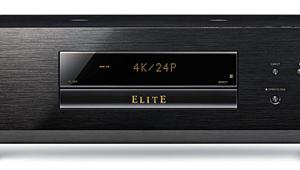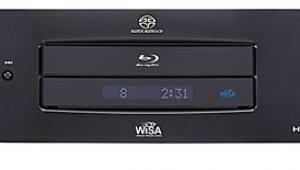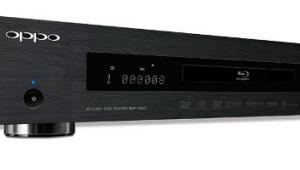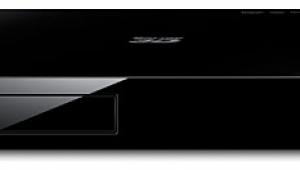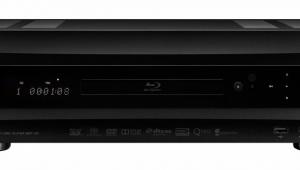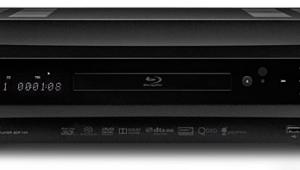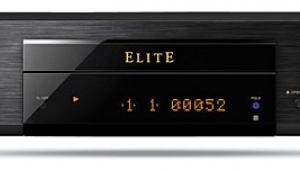in your article, you mention "The player’s audio and video prowess didn’t let me down in any way and matched the experience from my reference Oppo BDP-103D player." Are you saying that the Samsung produced as good video quality as your OPPO 103D ? I was thinking of upgrading from my Panasonic BDT210 to the oppo later in the year, but don't want to waste the $ if it won't improve picture quality..
Samsung BD-H6500 Blu-ray Player

AT A GLANCE
Plus
Outstanding audio and video performance
Loaded with streaming options
Unique screen mirroring with Samsung smartphones and tablets
Minus
Suspect build quality
Controls are on top of the player, limiting placement options
THE VERDICT
A good budget player that makes up in performance and features what it lacks in build quality.
Last week I was playing poker with a bunch of guys and our topic of conversation turned to home theater. I was asked what I was currently reviewing, and when I mentioned the Samsung BD-H6500 Blu-ray player, one of my friends was shocked. “They’re still selling Blu-ray players! Why?” Needless to say, I was shocked, too. When I asked the table of nine other guys, only two said they had watched a Blu-ray movie in the past three months; the rest were getting their movies from PPV (pay per view) or streaming them from Netflix, Vudu, or Amazon VOD.
This spurred a discussion of price/quality versus convenience, and I was truly shocked that 70 percent of the table chose convenience first. In fact, one guy said he bought a Blu-ray player not because of its ability to play back discs, but because it offered every streaming option he was looking for! My, oh my, how the world has changed.
They Don’t Build ’Em Like They Used To
The BD-H6500 has pretty much everything you need in a modern Blu-ray player: UHD upscaling, 3D, plenty of streaming options, and built-in Wi-Fi. But the build quality is rather suspect, with the player weighing in at less than 3 pounds. Granted, these aren’t the good ol’ days when weight meant something with your electronics, but seriously, 3 pounds?
The design of the BD-H6500 is virtually the same as that of last year’s Samsung models. The glossy black facing has a classy look; the disc tray is located on the left side of the unit, and the sole USB input hides behind a plastic cover on the right. When the player is turned off, it looks as if there isn’t any sort of front display, but it’s hidden toward the middle and comes to life when you hit the power button.

Disc controls are nowhere to be found on the front façade; instead, they’re located in a circle format on the top right side of the player—just like last year. I wasn’t a real fan of this then, and I’m still not now, because if you place the player in a rack, you need to have a lot of space above it in order to control it by any means other than the remote. Speaking of the remote, Samsung has finally gotten the message and provided a backlit one—yeah! The ergonomics aren’t the best, with the Home button right below the Play button, but at least you’ll be able to see it in a dark room. Furthermore, the responsiveness is instantaneous.
The rear panel includes a single HDMI 1.4 output (which supports Blu-ray 3D and Deep Color), a TosLink optical output, and an Ethernet port. If you need dual HDMI outputs, you’ll have to step up to the next Samsung model and part with about $80 more in order to bypass a non-3D-capable AVR/pre-pro to enjoy 3D. Better yet, skip it altogether because I think the fad has passed and the manufacturers are hot and bothered over 4K now anyway. The BD-H6500 can decode DTS-HD Master Audio and Dolby TrueHD soundtracks internally and pass the audio out via PCM to your AVR, or you can pass the raw bitstream to your compatible gear—the choice is yours to make, but I couldn’t detect any audible differences between the two in my setup.
Since the analog video hole was closed a couple of years ago (because we’re all pirates who want to steal movies), Samsung has chosen to exclude an analog audio output as well. This is a pain for anyone who runs a multizone system and wants to stream Pandora to a second zone, since most older AVRs won’t send a digital signal to a multizone environment. It’s not the end of the world, but if this is something you’d like the ability to do or are replacing a model that’s already set up to feed a second zone this way, then take it under consideration.
Samsung does include its own version of HDMI CEC (Consumer Electronics Control) named Anynet+, which allows a Samsung TV and Blu-ray player to communicate with each other. This will simplify your system for others in your family, but any self-respecting technology geek disables this feature right out of the box and uses a whiz-bang universal remote.
User Interface and Setup
When you first power on the player, you’re greeted with an auto-setup routine that lets you set the player language, input the wireless network SSID information (or configure a wired network, if you so choose), agree to a lengthy legal statement regarding Samsung’s Smart Hub (does anyone actually read this stuff?), and then set the player’s aspect ratio output. After all of that, I was informed there was a software update, which downloaded and took about four minutes to install. This unfortunately deleted my Wi-Fi information, and I had to input it for a second time, which wasn’t a lot of fun using the remote and the onscreen keyboard. One of these days, to make my life easier, I’m going to buy a Bluetooth-compatible keyboard that will work with a variety of players on the market, but at this point I’m too cheap to spend the $50.
- Log in or register to post comments


Do you wish to make a chicken house, a shed for keeping garden equipments? Is it that you want to keep all your sports equipment in the sports wood compartment, or you really want to construct a family shed? Or is it going to be a shed for the dog to play inside? It depends on the woodworking ideas that you have in the mind and why you are willing to make a woodworking design and shed.
Construction Design


